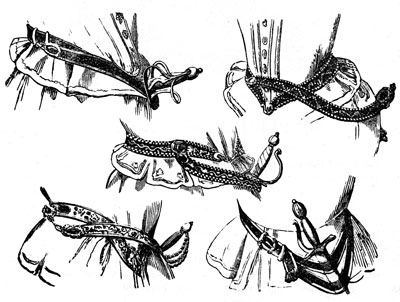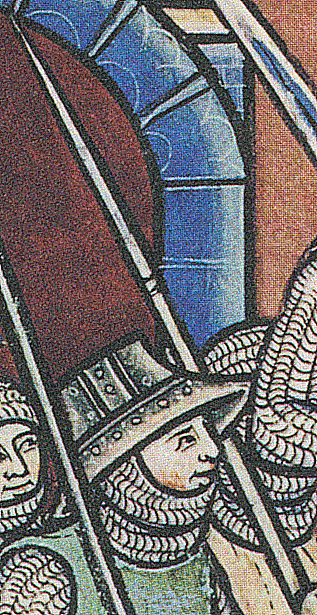Act 1 Scene 1 costume research - Francisco; soldiers in general by ada
SL Shakespeare Hamlet – Ada Radius 2007-09-09
Act1 scene 1 soldier costumes – Francisco, Bernardo, Marcellus
The best guess is that, regardless of the setting of the play itself, the soldiers in the cast would have been dressed, more or less, as Elizabethan era soldiers. The soldiers of the sixteenth century wore civilian dress with scarves, pieces of foliage or other makeshift identification to identify their liege. Royal guards were issued a distinctive surcoat, to wear over ordinary clothing. Although Elizabethans were using muskets and other firearms, there is no mention of them in Hamlet.
FRANCISCO
In all of the Hamlet stage directions, and in his lines themselves, it’s fairly clear that Francisco is the lowest ranking soldier of the three, which means that he likely had clothing of the peasant class, with the addition of a helmet and a weapon.
Shirt: The peasant shirt was made of linen, thigh length, cut in rectangular pieces. It pulled on over the head and had a mid chest opening with a neckband, with or without a collar which tied or buttoned, and long, fairly full sleeves with cuffs. If you design a long jerkin (see below) then you can omit this – it won’t show.
Breeches: Nether hose were the trousers of the peasant class. They were most often knee length, gathered or pleated into a waistband, and tapered to gather or pleat into leg bands which tied or buttoned. They could have a plain fly front, but many still retained a triangular flap opening – the codpiece - which fastened with buttons or ties. Some nether hose were much shorter, to the upper thigh, and often worn under a long jerkin so that they barely showed, so also might be omitted on the avatar.
Jerkin: The peasant jerkin was a loose, unstructured vest, often made of leather. It was usually thigh length, and could have either a high round or a deeper V neck. It laced. tied, or buttoned up the front, or was held closed by a belt.
Sleeves were separate garments that fastened to the jerkin with ties and worn in cold weather – here shown as a knit, as are the stockings.
Cloaks, if any, were made of wool, mid calf or knee length. Gray or brown.
Hat + Helmet: Coif, or “biggin” (the hat you wore at the beginning of your life) – for peasants, a close fitting plain linen cap, covering most of the hair, with strings to tie under the chin. The coif was often worn as an under cap for another hat, in a soldier’s case, his helmet.
Belt: Peasants usually wore a sturdy leather or cloth belt, with loops for hanging tools and a pouch. Often the tongue of the belt was quite long, and hung down in front for as much two feet, depending on the size of the wearer. Men wore it at waist level, or hanging a little lower. Belt buckles should be plain, forged iron, or cast brass. Leather can be dyed brown or black, but not in colors. Knives, pouches, tools, etc., are hung from the belt. The illustration below shows a few variations - a peasant’s would not have much, or any, decoration.
Shoes for peasants - simple laced up leather buskins, flat slippers or “Mary Jane” styles with a strap. Leather should be natural, brown or blackish.
Stockings - either sewn bias cut cloth, or knit, with garters - long strips of cloth or knitting, wrapped around the leg above the knee and tied or buckled. The garters might not show under the jerkin.
Knives: Almost all peasants and lower middle class people carried eating knives. Knives for peasant use were single edged blades, similar to modern hunting knives, worn on the belt in a protective sheath with fastening. In addition, men wore daggers as defensive weapons, with double edged blades, in a belt sheath as for eating knives. – see the illustration of the belts.
Weapon: The partisan referred to in the Hamlet text is a kind of pike – there is an illustration of one in the woodblock above –a long pointy metal pole, or it might have had a tip as Sabina describes in her blog entry:



